Plasma flat-panel: (plasma reviews | plasma prices)
Capable of bright, detailed, high-contrast images with very good blacks in a normally lit room. Viewable over a wide horizontal angle and can be wall-mounted. Slim (from 3 to 6 inches thick, depending on screen size) but fairly heavy–80 pounds and up for a 42-inch is typical. Subject to burn-in of a “ghost” image if left too long with a static logo or image on-screen. Some are power pigs, using up to 400 watts or more. Put your hand above the unit to see how much heat it generates–that will give you an idea how efficiently it uses power. Commonly available in diagonal screen sizes from 37 inches to 60 inches, the latter size being very expensive, from $15,000 to $20,000 US.
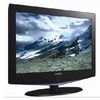
LCD flat-panel: (LCD TV reviews | LCD TV prices)
Very popular in screen sizes of 37 inches and smaller (recently, however, a few manufacturers offer LCD panels as large as 46 and 55 inches diagonal, with appropriately large prices, starting at $6,000 US). Capable of excellent detail and color, with blacks that are fair to good, if not quite the equal of the best plasma screens. Generally more limited viewing angles than plasma, but new models are getting better. May be subject to “image lag” with fast-moving horizontal figures (e.g., a hockey player skating down the rink), which leave a ghost-like trail behind them because the LCD pixels don’t turn on and off fast enough. View some fast-moving sports to for this.
Generally run cooler and use less power than plasma panels and are not subject to burn-in of screen images.
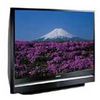
DLP rear-projection: (DLP TV reviews | DLP TV prices)
Digital Light Processing sets use a bright lamp that shines against a postage-stamp-sized Texas Instruments-invented Digital Micro-mirror Device that’s coated with millions of tiny hinged mirrors that create the image together with a fast-spinning color wheel, projected onto a self-contained screen. Capable of very bright, high-contrast ultra-sharp images with vibrant, rich color, excellent blacks and average but not great shadow detail (though newer sets are getting better). Very good value for larger screens (50 inches and up), with prices starting well below $2,000 US. Color wheel may produce so-called “rainbow effects” visible to some viewers as brief flashes of rainbow colors seen in dark scenes with bright streetlights. Most viewers never see them but a tiny minority (less than 3%) can’t watch DLP. Have family members view DLP set to make sure no one is sensitive to rainbow effects. Projector bulbs ($250 to $400) require replacement every 3,000 to 8,000 hours of viewing, depending on usage patterns and brightness settings. One exception: Samsung’s $4,000 HL-S5679 DLP 56-inch rear-projection set that uses an LED light engine to eliminate the spinning color wheel (therefore no rainbow effects). The LED light source longevity is specified at 20,000 hours, roughly 14 years given average viewing habits. DLP sets are typically about 13 to 21 inches deep, for screen sizes beginning at 42 inches up to 73 inches diagonal. Not subject to burn-in of screen images.
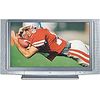
LCD rear-projection: (LCD RPTV reviews | LCD RPTV prices)
Uses three LCD panels (for red, green, and blue) through which a projector bulb shines to generate the image that is projected onto a self-contained screen. Capable of vibrant, bright, rich and detailed images with good blacks that are close to DLP, if not quite their equal, although newer models with “auto-iris” devices improve contrast and blacks. Like DLP, the projector bulb requires periodic replacement depending on usage and brightness settings. No “rainbow effects” but some models have a visible “screen-door” effect (like looking through a screen door) because the pixels are not as close together as the mirrors on a DLP chip. This effect is only visible if you sit too close to the screen and only bothers some viewers. Observe my recommended viewing distances and you’ll rarely if ever see them.
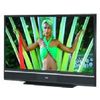
LCoS rear-projection: (LCoS RPTV reviews | LCoS RPTV prices)
Liquid Crystal on Silicon is a variation of LCD technology, first marketed by JVC and later refined by Sony in its SXRD and Qualia models. Similar to LCD but capable of improved blacks, contrast, detail and freedom from screen-door effects. Typically more expensive than LCD rear-projection sets. Immune to image burn-in.
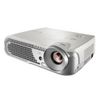
Front projection (DLP, LCD, LCoS): (projector reviews | projector prices)
DLP, LCD and LCoS technology is also available in front projectors for use in darkened rooms with a separate big screen. These compact, affordable (starting at $2,000 US) HD projectors can be ceiling-mounted and all use projection bulbs that require more frequent replacement (typically 1,000 to 3,000 hours) because the bulbs run hotter and brighter in order to throw an image onto a large 96 to 120-inch screen across the room. All have adjustable zoom lenses and focus, many with handy remote controls of the latter functions, although the zoom ranges do have limits and you must your screen and projector placement with the manufacturer’s specs to make sure the unit will throw the desirable image size in your particular setup. Advantages and disadvantages of these different technologies basically parallel those of the DLP, LCD and LCoS rear-projection sets noted previously, except that with a separate screen you can see a clear, bright image from any angle in the room. Three-chip DLP front projectors with no color wheel (thus no rainbow effects) are available at very high cost ($15,000 and up).} The last decade has brought a wide range of video choices to the market, all of which are capable of producing stunningly beautiful high definition images. Hopefully this article has helped you find the best set for your viewing preferences.






























